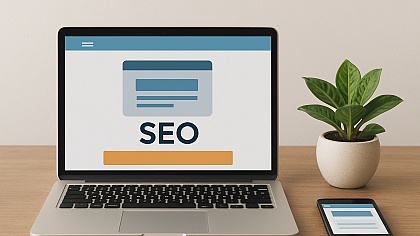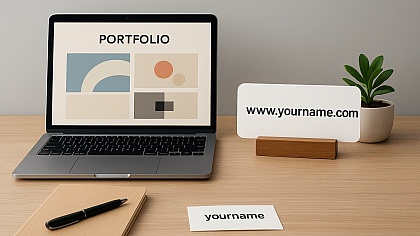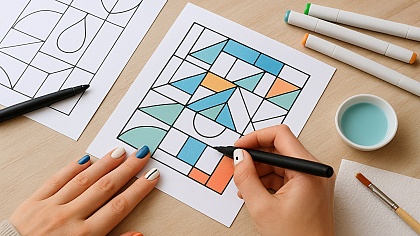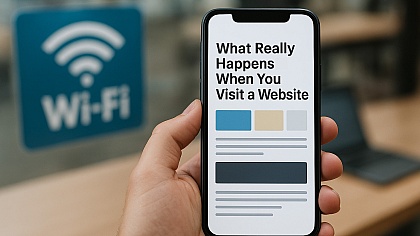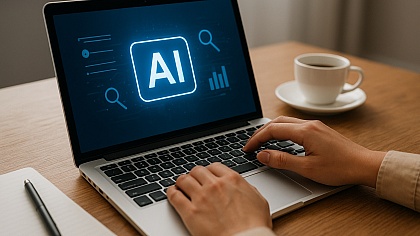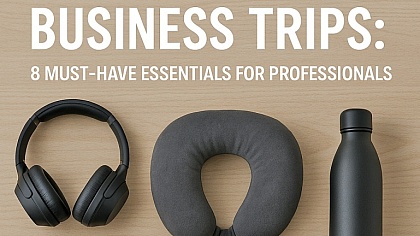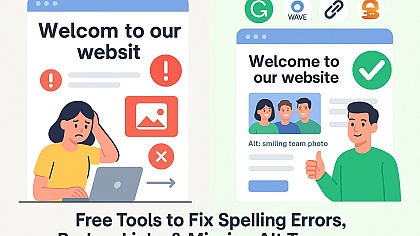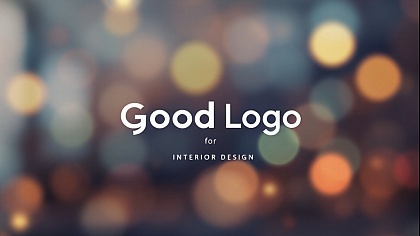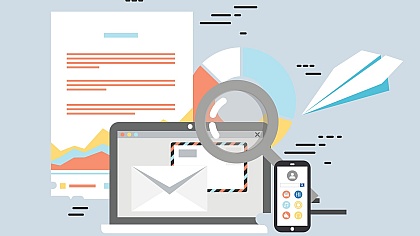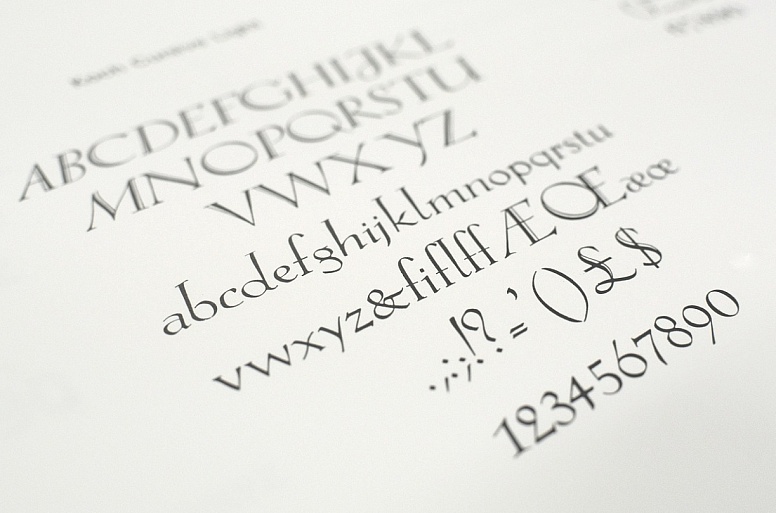
Top Typography Trends of 2025 (Explained Simply)
Typography is more than just choosing a font. It’s how letters and words come together to tell a story. In 2025, designers are pushing the boundaries of typography in bold and creative ways. Designers are trying new styles that look bold, fun, and even futuristic. Some styles feel old but new at the same time, and others help raise awareness for the environment.
Let’s look at the top typography trends for 2025 that are shaping how we read and experience text in web design.
Why Web Typography Matters: Function, Feel, and Flow
Web design typography is more than just selecting good-looking fonts — it's about how text lives and breathes on your website. From font choice and size to line spacing and layout, every element of typography directly influences how your message is received.
A well-chosen typeface doesn't just make your site aesthetically pleasing — it builds trust, reinforces brand identity, and guides users through your content. Good typography can make or break the user experience (UX). If your text is hard to read, cluttered, or poorly styled, visitors won’t stick around. Even small issues like inconsistent font usage or too many typefaces can disrupt readability and lead to user frustration, and eventually, lost conversions.
To create a smooth and cohesive experience, a good rule of thumb is to stick to two complementary fonts. This keeps the design clean, maintains user focus, and supports a visual hierarchy that helps people quickly scan and understand your content.
Typography also works hand-in-hand with modern design trends. Minimalism, bold outlines, variable fonts — these trends can breathe new life into your layout when applied with purpose. Done right, it’s a simple but effective way to keep your web design feeling current and intentionally crafted.
1. Pixel Typography
Pixel typography looks like it came from old video games or early computer screens. Each letter is made up of tiny squares, just like in 8-bit games. These fonts feel a little old-school, but that’s what makes them cool again.
Designers love using pixel fonts to give a digital or futuristic feeling. They take us back to the days of arcade games and classic computers. Even though they seem simple, pixel fonts can make web design feel modern and creative.
Where it works best:
- Tech-themed branding
- Digital artwork
- Playful or fun designs
2. Brutalist Typography with Softer Touch
Brutalist typography uses thick, bold letters that feel strong and powerful. In the past, this style felt very serious or even harsh. But in 2025, designers are giving it a gentler feel. Letters still look bold, but now they include small changes—like rounder edges or slightly uneven lines—to make them seem friendlier.
This style helps messages stand out without feeling too loud. It’s perfect for brands or websites that want to grab attention while still feeling welcoming. Agencies like Lilo, which focus on cutting-edge web design, are exploring this softened brutalist look to create contrast and personality.
Where it works best:
- Magazine layouts
- Modern websites
- Creative brands that want to be noticed
3. Kinetic Typography
Kinetic typography means “moving text.” Instead of just reading words, people get to see them dance, bounce, or respond to sound. In 2025, this style is becoming more advanced. The letters can react to music, voice, or background noise.
It’s like the text is alive, changing based on what’s happening around it. This makes it exciting and fun to watch, especially on animated web design interfaces.
Where it works best:
- Social media videos
- Animated brand messages
- Interactive websites
4. Liquid Chrome Fonts
Imagine a font that looks like shiny metal melting on your screen. That’s liquid chrome typography. This trend started a few years ago, but now it’s bigger and bolder. The letters are glossy and seem to move like liquid metal.
They have a 3D effect and shine with light, resembling a mirror. This makes them perfect for brands that want to feel futuristic or stylish.
Where it works best:
- Tech product ads
- Fashion campaigns
- High-end digital designs
5. Eco-Friendly Typography
Caring for the Earth is important, and design can help. Eco-typography uses fonts that are made to be good for the environment. These fonts might use less ink, be easier to print, or be designed with soft, natural shapes that reflect nature.
They help brands show they care about the planet and want to make a positive change.
Where it works best:
- Eco-conscious brands
- Organic product packaging
- Sustainability campaigns
6. Glitch Typography
Glitch fonts look like something went wrong—but in a cool way. Letters may be broken, shifted, or have lines running through them. It looks like a screen that’s glitching or a digital error.
Designers use this style to show energy, creativity, and sometimes even chaos. It’s not about being perfect. It’s about being real and different.
Where it works best:
- Music and album covers
- Edgy or modern brands
- Creative posters and digital art
7. Organic Typography
This trend is all about fonts that feel natural and handmade. Instead of being perfect and polished, these fonts look like they were written with a brush, pen, or even carved by hand.
They have small flaws and uneven shapes that make them feel warm and personal. In a world full of digital screens, this style reminds people of the human touch.
Where it works best:
- Handmade or craft-based brands
- Personal projects
- Natural or eco-friendly designs
8. Variable Fonts
Variable fonts are very flexible. You can change the thickness, width, or space between letters using just one font file. This helps designs look great on screens of all sizes, from phones to big monitors.
Designers like using variable fonts because they save time and allow more creativity. Whether it's a big headline or small body text, the same font can be used in many different ways — a game changer in responsive web design.
Where it works best:
- Websites
- Apps
- Brands that need many styles in one design
Applying Typography Trends Without Overload
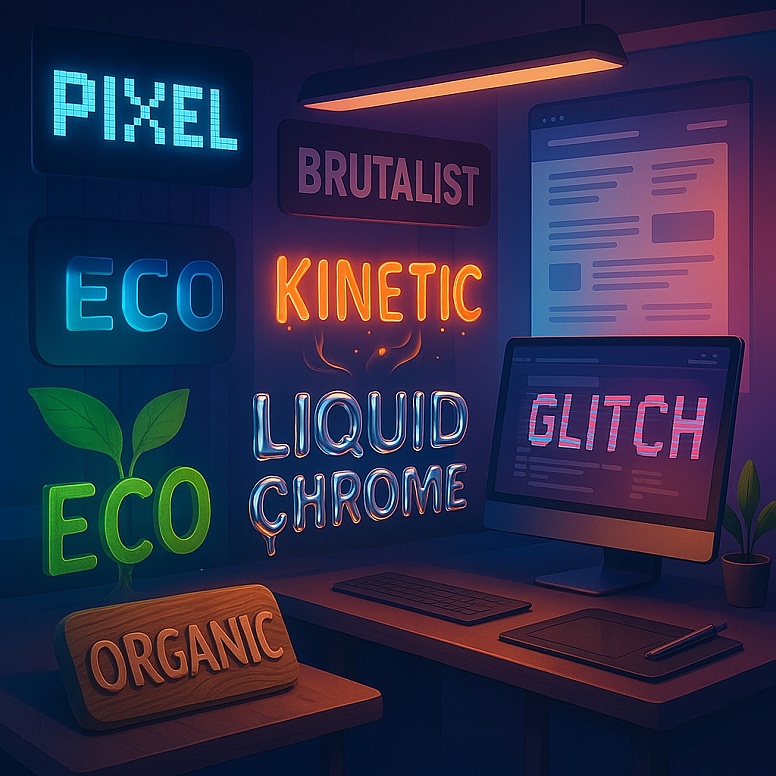
As exciting as design trends can be, restraint is key. Always align your typography choices with your brand’s voice and purpose. For example, a sleek, futuristic font might work for a tech startup but feel out of place on a wellness blog.
Experimenting is fine, but overdoing it with competing styles can make your layout feel chaotic. If you’re blending trends (like outlined fonts with a monochrome palette), ensure they complement each other and serve the content, not distract from it.
A good practice is to develop a consistent design system for your typography. Include font pairings, sizes, spacing rules, and use cases in your brand style guide. This ensures visual unity across your web design and extends to other brand assets like business cards or printed flyers.
By staying organised and strategic, your typography can become one of the most powerful tools in your design toolkit.
What Else Is Changing?
Typography in 2025 isn’t just about styles—it’s about how people use and experience fonts. Designers are exploring AI-generated fonts, holographic effects, and typefaces that change in real time. There are no fixed rules anymore.
People are picking fonts based on emotions, values, and stories. A font isn’t just a tool—it’s part of a brand’s personality. In this new world, a font can move, react, or even feel alive.
In 2025, typography stands out with boldness, innovation, and an element of surprise. From pixel designs to shiny chrome letters, every trend offers something unique. Some fonts remind us of the past, while others push us toward the future. Some are quiet and caring, while others are wild and daring.
What matters most is using typography to connect with people. Whether it’s through motion, texture, or meaning, the right font can make any design stronger.
So go ahead and explore. Try something new. Let your text do more than just talk—let it express, dance, and inspire.
Happy designing.
